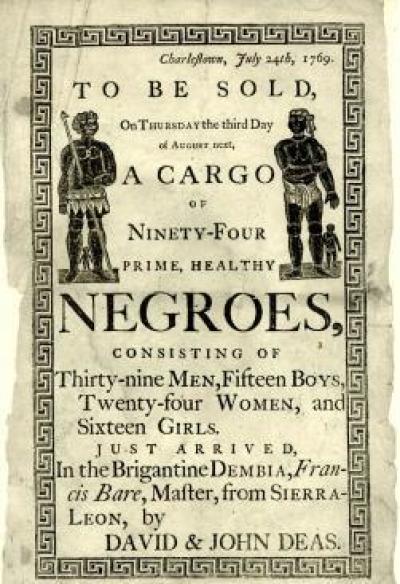Roots of Hate

As a British woman with Caribbean heritage, watching events unfold in America and debates over statues of slaveowners from the past, I was reminded of my recent trip to the Gambia, where I went in search of the origins of the slave trade.
"The Arabs started it… The Portuguese followed in the footsteps of the Arabs…
More Europeans followed in the footsteps of the Portuguese…
No one came back. Only Alex Haley."
Those were the haunting words of our tour guide, Lamin, as we, in seemingly unsuitable glamour, were returning by speed boat from Kunta Kinte island just off the coast of The Gambia. It is the place where many Africans from the 15th to 19th centuries last touched African soil. Perhaps even my own ancestors.
Haley's 1976 novel Roots, popularized in the later explosive TV miniseries, memorialized his claimed ancestor, Kunta Kinte, who was violently captured on the African mainland and, in chains, sent to America via a European slave ship. It is mainly through his eyes that Roots tells the harrowing story of the trans-Atlantic slave trade. But the series left me with some nagging questions.
What led Europeans to enter the African slave trade in the 15th century? What were the prevailing attitudes that fostered such an inhuman practice? After all, Europe had been aware of Africa for centuries. The 6th century BC Greek philosopher, Anaximenes of Miletus, divided the world into Europe, Asia, and Libya (the word used then for Africa). So when did it become acceptable to start enslaving people merely on the basis of skin color?
Renowned Princeton University Professor of Near Eastern Studies, Bernard Lewis, remarks:
"During the period immediately following the death of the Prophet [Muhammad] in 632 AD the great Islamic conquests took the new faith to vast areas of Asia and also of Africa. A new situation was created… The first of these is the narrowing, specializing, and fixing of color terms applied to human beings. In time, almost all disappear apart from "black," "red," and "white;" and theses become ethnic and absolute instead of personal and relative… Together with this specialization and fixing of color terms comes a very clear connotation of inferiority attached to darker and more specifically black skins."
This change, and the frequent dubious "Curse of Ham" references we see in early Islamic literature, go some way to explain the later New World slaveholder attitudes that develop:
Back in the 11th century, Islamic theologian, Ibn Sina, wrote:
"[Blacks are] people who are by their very nature slaves."
The 13th century saw respected Shia scholar, al-Tusi, surmise:
"…the Negro does not differ from an animal in anything except the fact that his hands have been lifted from the earth."
This view was repeated, almost verbatim, five hundred years later by English slave owner, Edward Long, in his History of Jamaica (1774). Three hundred years before Long, and over a hundred years before the start of the trans-Atlantic slave trade, we find the famous 14th century Sunni scholar, Ibn Khaldun, who some have called the Father of Sociology, stating:
"…the Negro nation are, as a rule, submissive to slavery, because [Negroes] have little [that is essentially] human and have attributes that are quite similar to those of dumb animals… They cannot be considered human beings."
Now, like all things in life, there are complexities, anomalies, and nuances that would deny a simplistic narrative, however one thing is certain: the trans-Atlantic slave trade was a continuation and expansion of an already thriving Arab enterprise. Further, the trans-Saharan trade long outlived and, in terms of African victims, outnumbered its European counterpart.
By this simple acknowledgment, one does not seek to absolve European slave owners of any wrong doing. We are all responsible for our actions and cannot pass that responsibility on to anyone else. But what we can do is to better understand the historical context of the trades and to answer other questions that arise, such as:
Why is there so little knowledge of the Trans-Saharan slave trade? Where are the apologies from Arab countries? Where are the Hollywood blockbusters of slaves going East and not West? Who silenced the blood?
Blood is meant to cry out! Think the World Wars. Think Darfur, Chechnya, Armenia, Cambodia, Rwanda… Blood cries out! And we must hear it lest we forget what man is capable of when allowed to dehumanize another. We must hear lest we repeat these errors — no, these monstrous sins — in places like Ferguson and Charlottesville.
Sadly, Professor Lewis concludes: "The myth of Islamic racial innocence was a Western creation and served a Western purpose." He notes 18th century western philosophers praised notable aspects of Islam but also exaggerated them "as a polemical weapon against the Christian churches and clergy." One wonders whether this would be so if the whole church took the example of the slaveless Jesus Christ more seriously. But we are where we are.
Recalling the often fatal castrations and other horrors inflicted upon slaves, a former 20th-century Moroccan slave observed: "Do you think anyone could forget that?"
I fear we might.




























